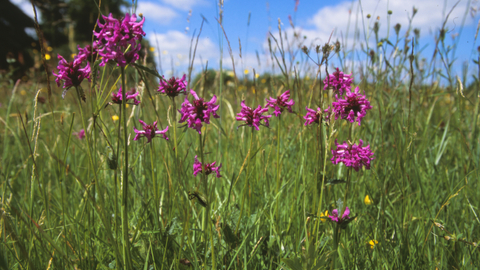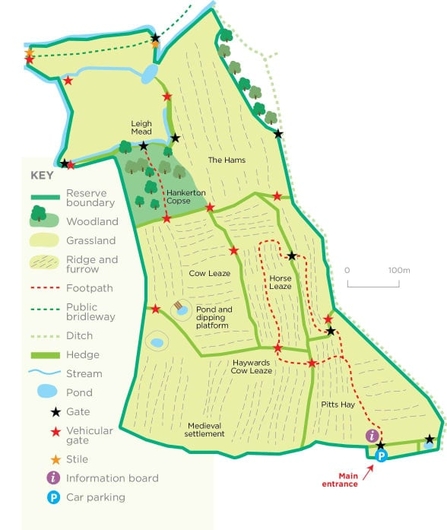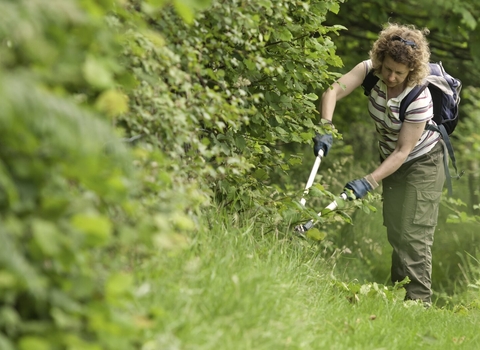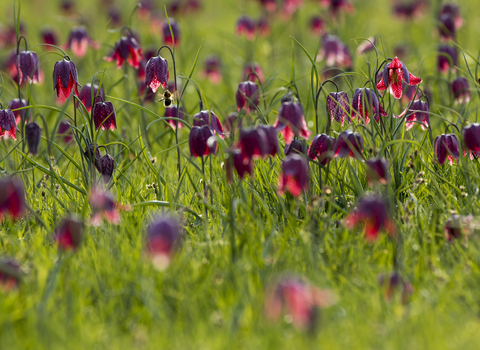
Cloatley Meadows, Wiltshire. Credit: David Kjaer.
Cloatley Meadows
Location
Know before you go
Dogs
See our FAQ's for more information.
When to visit
Opening times
Open at all timesBest time to visit
Spring and summer. Local attractions nearby include Malmesbury Abbey (4 miles), Keynes Park (4 miles), Cotswold Water Park (5 miles).About the reserve
The eight meadows that make up this nature reserve on the edge of the Braydon Forest are awash with wild flowers and alive with insects during summer.
Three fields - Horse Leaze, Cow Leaze and The Hams - are within Cloatley Manor Farm Meadows Site of Special Scientific Interest. In some meadows you can still see the parallel ridges and furrows left by medieval farming. Near the southern boundary, undulations in the ground are all that are left of a medieval settlement.
The flower display starts in April with cowslips and continues through summer with meadow vetchling, pignut, betony, heath spotted orchid, bee orchid, adder's-tongue fern and, in the copse, moschatel.
Come in June and July to see butterflies - marsh fritillary, small heath, shoulder-striped wainscot, brown hairstreak. The uncommon chimney sweeper moth lays its eggs on the frothy white pignut. Spot damselflies and dragonflies near the four ponds. Wintering birds include barn owl, fieldfare, redwing and bullfinch while the common whitethroat nests here. In the hedgrows you may notice several oaks more than 200 years old. We cut only one third of the hedges every year as overgrown hedges provide food for birds during winter.
We cut hay in mid-July (or as soon as a weather window appears) and after graze with Belted Galloway cattle and occasionally sheep. This removes the tough grasses so that wildflowers can survive.
Species
Habitat
Contact us
Environmental designation
Map of Cloatley Meadows

Get your timing right and Cloatley Meadows are a fabulous reminder of how grazed fields could be. Thick with wildflowers, insect and bird life, Cloatley has a deep natural beauty.

Volunteer, Aline Denton, cuts brambles and blackthorn as part of the farm's conservation management - Ross Hoddinott/2020VISION

